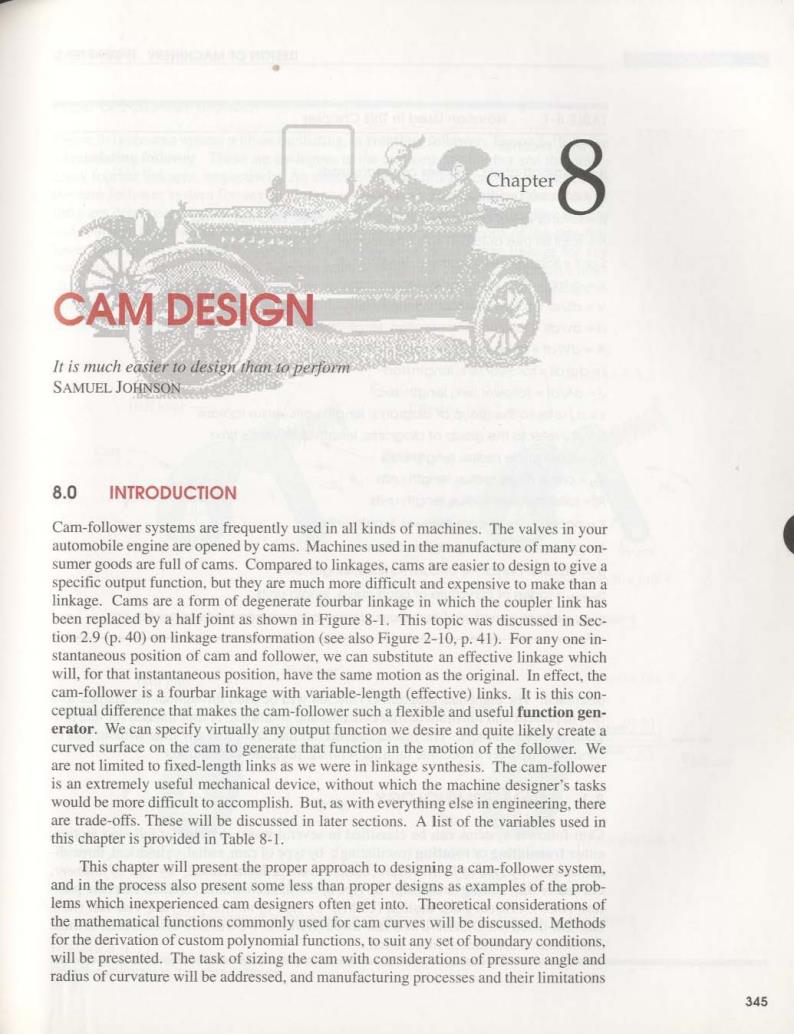正在加载图片...

Chapter CAM DESIGN It is much easier to desigit than to perf SAMUEL JOHNSON 8.0 INTRODUCTION Cam-follower systems are frequently used in all kinds of machines.The valves in your automobile engine are opened by cams.Machines used in the manufacture of many con- sumer goods are full of cams.Compared to linkages,cams are easier to design to give a specific output function,but they are much more difficult and expensive to make than a linkage.Cams are a form of degenerate fourbar linkage in which the coupler link has been replaced by a half joint as shown in Figure 8-1.This topic was discussed in Sec- tion 2.9(p.40)on linkage transformation(see also Figure 2-10,p.41).For any one in- stantaneous position of cam and follower,we can substitute an effective linkage which will,for that instantaneous position,have the same motion as the original.In effect,the cam-follower is a fourbar linkage with variable-length (effective)links.It is this con- ceptual difference that makes the cam-follower such a flexible and useful function gen- erator.We can specify virtually any output function we desire and quite likely create a curved surface on the cam to generate that function in the motion of the follower.We are not limited to fixed-length links as we were in linkage synthesis.The cam-follower is an extremely useful mechanical device,without which the machine designer's tasks would be more difficult to accomplish.But,as with everything else in engineering.there are trade-offs.These will be discussed in later sections.A list of the variables used in this chapter is provided in Table 8-1. This chapter will present the proper approach to designing a cam-follower system. and in the process also present some less than proper designs as examples of the prob- lems which inexperienced cam designers often get into.Theoretical considerations of the mathematical functions commonly used for cam curves will be discussed.Methods for the derivation of custom polynomial functions,to suit any set of boundary conditions. will be presented.The task of sizing the cam with considerations of pressure angle and radius of curvature will be addressed,and manufacturing processes and their limitations 345